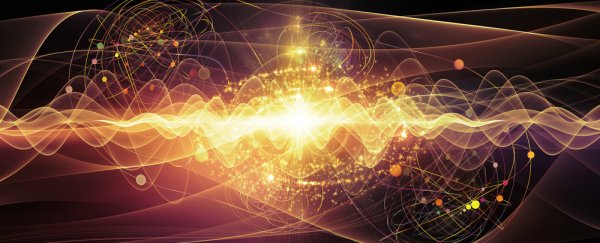For the first time, researchers have demonstrated what Albert Einstein called "spooky action at a distance" using a single particle. And not only is it a huge deal for our understanding of quantum mechanics, it also proves that the physics genius got something wrong.
Spooky action at a distance, or quantum entanglement, in a single particle is a strange form of entanglement that could greatly help to improve quantum computing and communications. Unlike regular quantum entanglement, which involves two particles being defined only by being opposites of each other, single particles that are entangled have a wave function that's spread over huge distances, but are never actually in more than one place.
As Lucy Ingham explains over at Factor Tech: "In other words, a single entangled particle can only be in one place at a given time, but it can be located over a very large distance. When the particle is measured, the wave function will instantly collapse to a set location."
But no one had ever managed to see this in action. Now, using homodyne detectors, which measure wave-like properties, a team of researchers from Griffith University's Centre for Quantum Dynamics in Australia and the University of Tokyo in Japan has successfully demonstrated the non-local collapse of a particle's wave function.
Publishing in Nature Communications, the team describe how they managed to split a single photon between their labs in Australia and Japan. They then showed that their choice of measurement in one laboratory really did cause a change in the local quantum state in the other lab - proving Einstein wrong almost 90 years after he first declared that single-particle entanglement was evidence that quantum mechanics didn't work.
"Einstein never accepted orthodox quantum mechanics and the original basis of his contention was this single-particle argument," one of the researchers, Howard Wiseman from Griffith University, explained in a press release. "This is why it is important to demonstrate non-local wave function collapse with a single particle."
Instead Einstein thought the fact a particle could only be detected at one point could be better explained by the hypothesis that the particle is only ever at one point. This seems to make more sense to a non-physics mind like me. But the new research now proves it's way more complicated than that.
"Rather than simply detecting the presence or absence of the particle, we used homodyne measurements enabling one party to make different measurements and the other, using quantum tomography, to test the effect of those choices," said Wiseman in the release.
"Through these different measurements, you see the wave function collapse in different ways, thus proving its existence and showing that Einstein was wrong."

Source: Factor Tech
